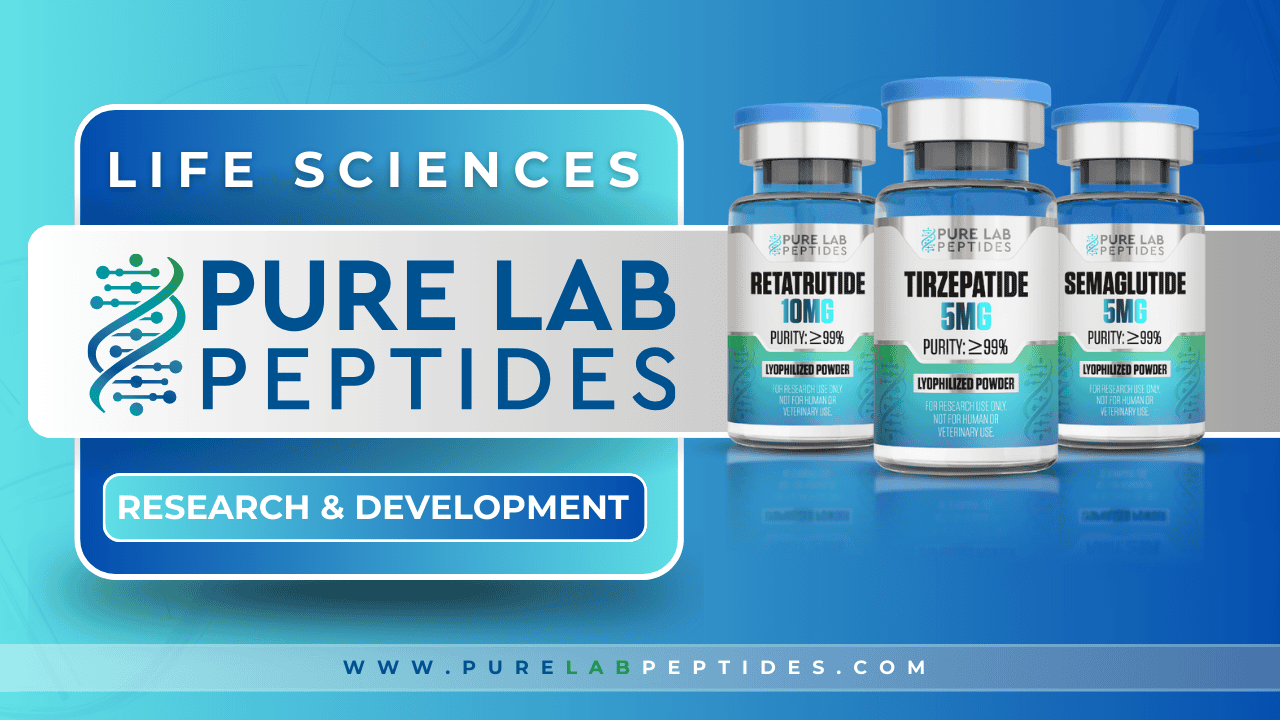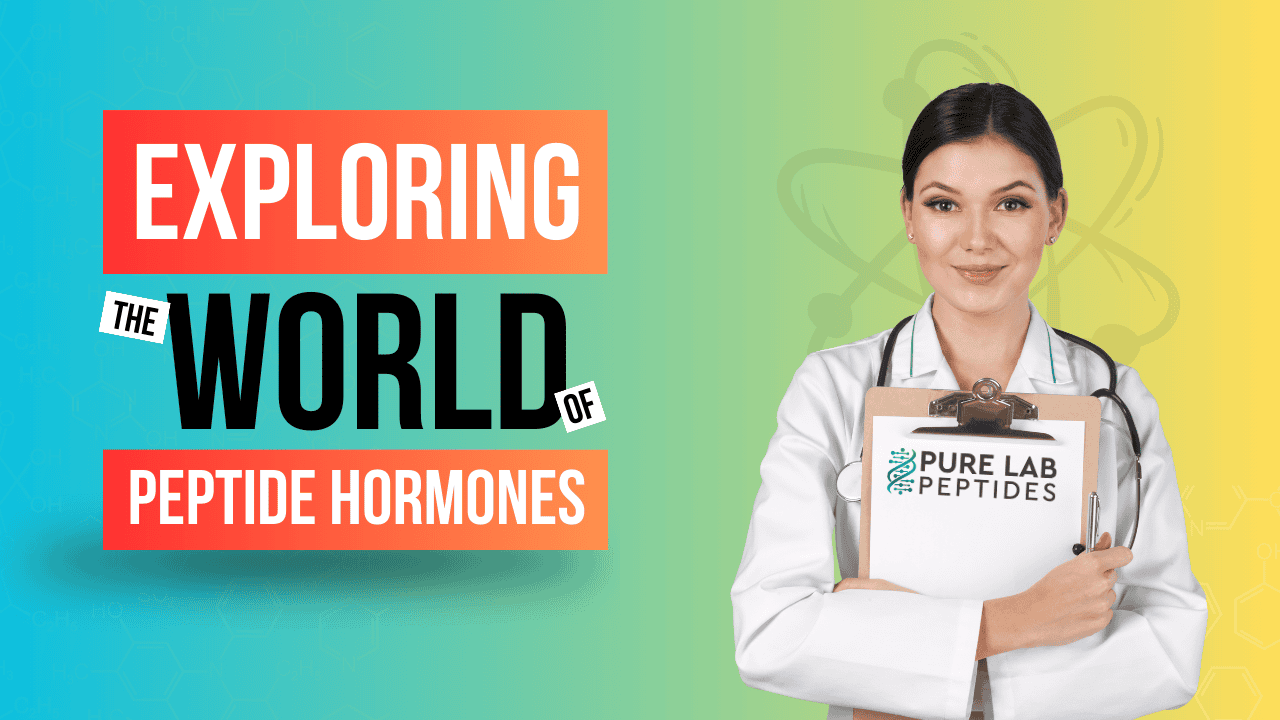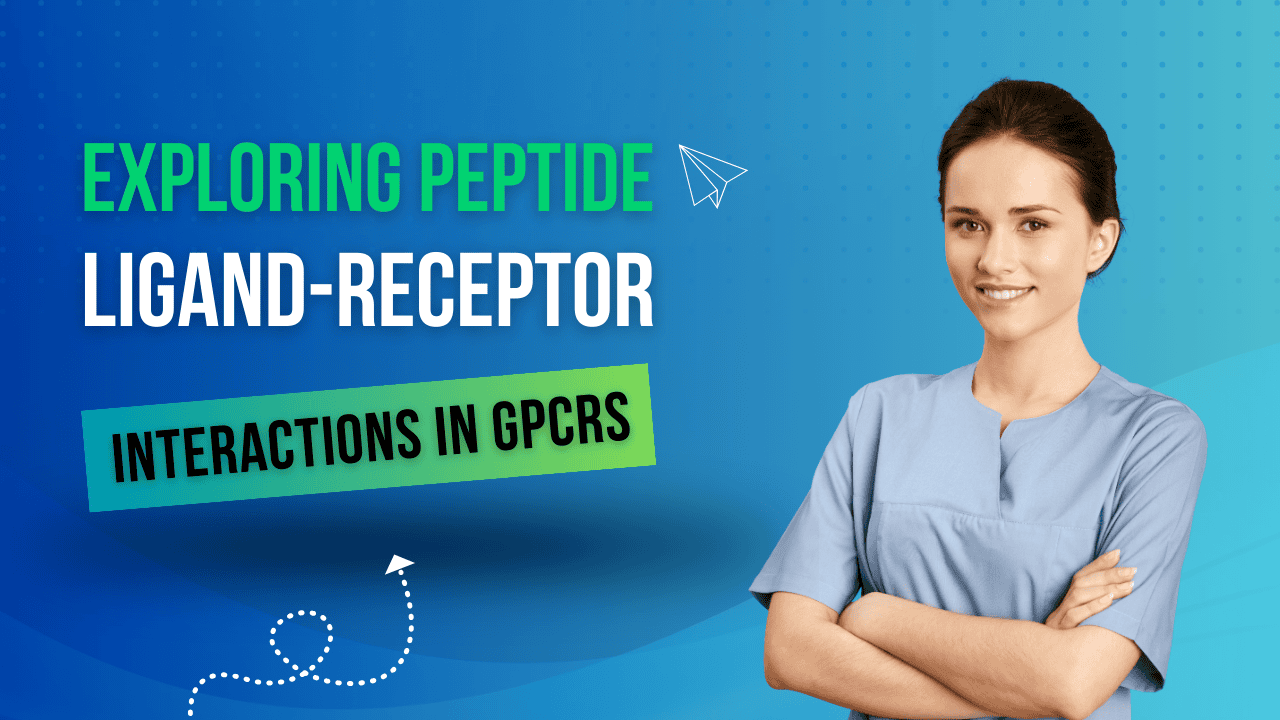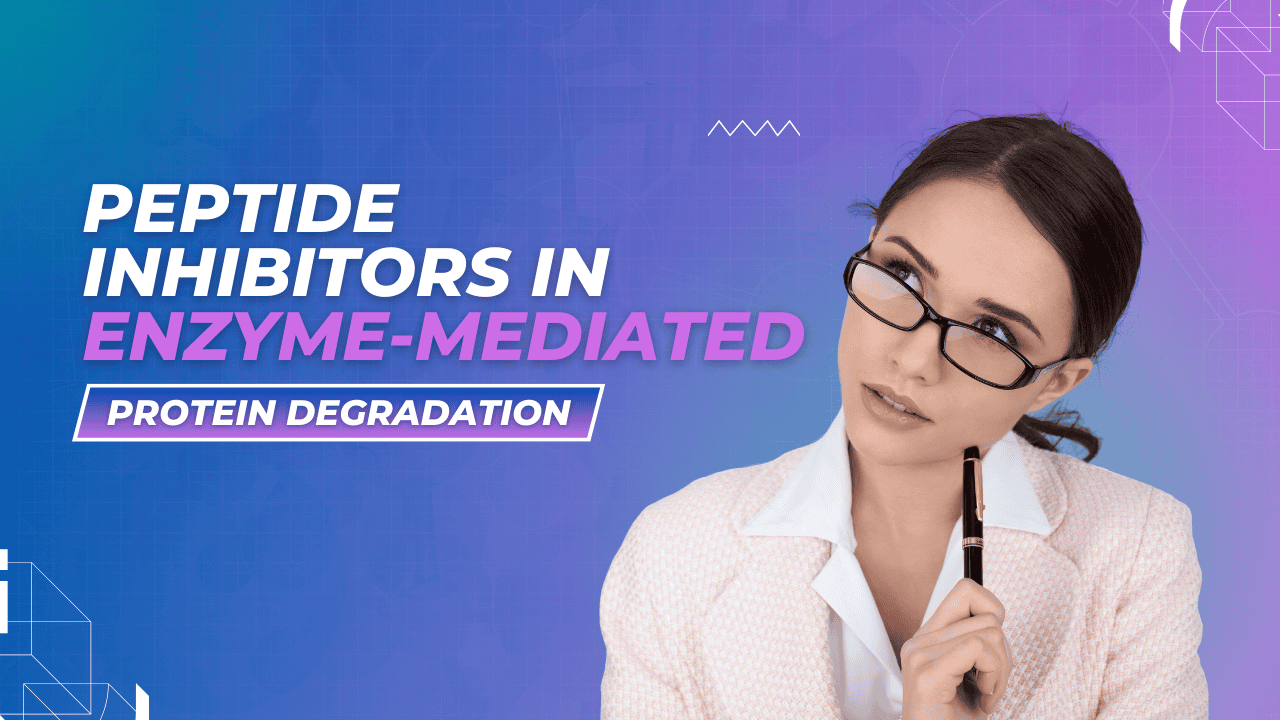

Peptide-protein interactions are at the heart of numerous biological processes, influencing areas like drug discovery and cellular function regulation.
With the proliferation of data and advancements in technology, predicting these interactions using deep-learning models is both an exciting challenge and a promising solution.
This blog explores the nuances of this approach, providing insights into the current obstacles and futures of this field.
Why should you read this?
Because understanding the intersection of peptides, proteins, and AI will empower you to grasp the complexities of these life-sustaining interactions and appreciate the leaps we’re making toward improved predictions.
Ah, the dance between peptides and proteins – it’s like watching a masterful tango unfold on the microscopic stage! These interactions refer to the bonding and interaction dynamics between a peptide (a short chain of amino acids) and a protein. It’s like the peptide is a key, searching for its lock on the protein to exert its biological function.
Imagine trying to run a city without knowing how the roads connect – chaotic, right? Well, peptide-protein interactions are those critical connections in our biological city’s roadmap. They control everything from cell signaling to immune responses.
Think of it as the backstage crew at a concert – they might not be in the spotlight, but without them, the show wouldn’t happen. These interactions ensure that cells can communicate, replicate, and perform necessary functions that keep us ticking.
Deep learning in bioinformatics feels like giving our computers a college degree in biology. It entails using neural network architectures to train models using biological data, enhancing their ability to predict complex patterns and interactions.
In simple terms, deep-learning models function like intricate puzzles. They piece together existing data to form a comprehensive image, predicting how peptides and proteins will interact. Layers upon layers of learning – it’s a true marvel!
Dipping into Neural Networks 101: Imagine your brain, but digital! These systems use layers of nodes (neurons) to process data in a way that emulates human learning, from recognizing features to making predictions.
Picture trying to solve a Rubik’s Cube with your eyes closed – tough, right? Predicting these interactions is equally complex due to the sheer variety and adaptability of protein structures and peptide configurations.
Traditional methods can be like using a magnifying glass to look at the stars – you see details, but miss the grand picture. Many existing techniques struggle with accuracy and scalability, hindering the journey towards reliable prediction.
In the world of peptides and proteins, complexity reigns supreme. The variability in protein structure and peptide residue composition can perplex even advanced models, making accurate predictions daunting.
Deep-learning models are like having Sherlock Holmes investigate your case. They analyze vast amounts of data, discern patterns, and improve prediction accuracy by leveraging complex algorithms.
Traditional methods vs. deep learning is like comparing a walkie-talkie to a smartphone. Modern models provide enhanced accuracy and scalability, processing immense data pools with impressive agility.
Why deep learning? It’s like comparing a bicycle to a Tesla. While both get you from A to B, deep learning automates and refines many steps, surpassing the capabilities of traditional machine learning approaches.
We’re talking protein sequences, peptide binding data, and more. The secret sauce involves a variety of data types to enrich model training and, ultimately, the predictions.
Imagine curating a library: it’s not just about collecting books but organizing them meticulously. Data collection involves sourcing from repositories like the Protein Data Bank and ensuring cleanliness and relevance.
Garbage in, garbage out – complex models need pristine data. Best practices include removing duplicates, correcting errors, and ensuring consistency across datasets to uplift model performance.
Choosing the right architecture is like picking the perfect tool from a toolbox. Convolutional Neural Networks (CNNs) and Recurrent Neural Networks (RNNs) top the list for analyzing sequential and structural data.
Decisions, decisions… Your choice depends on the task; CNNs are great for spatial hierarchies, while RNNs excel at sequential data. Sometimes, hybrid models incorporating both are the golden ticket.
Every superhero has its kryptonite! CNNs are powerful but data-hungry; RNNs handle sequences but struggle with long dependencies. Weighing these strengths and weaknesses is vital for optimal picks.
Ever tried to solve a mystery without clues? The same goes for models: input features like amino acid sequences, protein surfaces, and binding sites provide crucial hints.
Feature extraction is akin to finding diamonds in the rough. Techniques like dimensionality reduction and sequence alignment spotlight the hidden gems within raw data.
The devil is in the details! Thoughtful feature engineering helps unveil subtle patterns, boosting model accuracy in predicting peptide-protein interactions.
Training a model is like getting in shape: you need a regimen. Start with data preprocessing, then move to model architecture specification, followed by iterative training with feedback loops.
Think of optimization techniques as the turbo boost for models. Techniques like Adam, stochastic gradient descent, and regularization strategies enhance model performance efficiently.
Finding that sweet spot is tricky. Overfitting (like memorizing answers) and underfitting (guessing haphazardly) are pitfalls that can be balanced by cross-validation, dropout, and regularization methods.
Validation is the litmus test. Split your data into training and test sets, employ cross-validation techniques (k-fold), and ensure the model’s robustness by evaluating performance on unseen data.
It’s like checking your math homework. Ensure data is randomly split into multiple folds, with each fold being tested against models trained on the remaining data, yielding reliable performance metrics.
Accuracy, precision, recall – metrics matter! For peptide-protein interaction prediction, focus on metrics like ROC-AUC and F1 scores to gauge how well the model distinguishes true interactions.
Integration is the final frontier. Deploying models using APIs (like TensorFlow Serving), ensures that the advanced predictions can be seamlessly integrated into existing data pipelines.
Toolkit time! Python reigns supreme, with libraries like TensorFlow, PyTorch, and Keras serving as indispensable resources for building and deploying models.
Scalability ensures your model isn’t just a one-hit-wonder. With the increasing complexity and volume of data, scaling up ensures sustained performance and applicability in various contexts.
Decoding model predictions is like interpreting modern art – context is key. Use tools like SHAP (SHapley Additive exPlanations) to break down the contributions of different features.
Visualization turns raw data into stories. Tools like Matplotlib, Seaborn, and TensorBoard help illustrate model performance and data insights, making complex results more digestible.
Knowledge is power – understanding outputs enables informed decisions. It ensures that model predictions translate into actionable biological insights, driving forward research and application.
Deep learning in drug discovery is like having a crystal ball. Predicting peptide-protein interactions helps identify potential drug targets and optimize peptide efficacy.
Imagine cutting down on trial and error. Enhanced predictions streamline the identification of binding sites, speeding up the development of effective pharmaceuticals.
From predicting drug efficacy to personalized medicine, the success stories are manifold. They’ve revolutionized approaches, leading to groundbreaking drugs and therapies.
Think real-life detective cases. Proteins and peptides in cancer research, HIV treatment, and neurodegenerative diseases highlight how precise interactions inform life-saving therapies.
Industries have shifted gears, incorporating deep-learning models in their R&D processes. Pharma giants routinely leverage these predictions to expedite and refine drug development pipelines.
Taking theory to practice isn’t without hurdles. Data noise, model interpretability, and integration complexities are among the challenges tackled to implement successful predictive frameworks.
Looking ahead, advancements like quantum computing and more sophisticated neural networks promise to revolutionize peptide-protein interaction prediction.
Keep an eye on trends like transfer learning, integrating multi-omics data, and increasing interpretability of deep-learning models. They’re the next big thing!
Personalized medicine dreams of a tailored fit. Predictive modeling is key, customizing treatments to the molecular level to enhance efficacy and minimize side effects.
With great power comes great responsibility. Ethical considerations, from data privacy to algorithmic transparency, ensure that advancements respect individual rights and societal norms.
Data privacy is sacred. Employing techniques like differential privacy and secure multi-party computation helps protect sensitive biological data while reaping the benefits of deep learning.
Ethical AI ensures trust and accountability. It’s not just about pushing boundaries but doing so responsibly, ensuring that tech serve humanity positively.
Put brains together, and magic happens. Collaboration between bioinformaticians, data scientists, and biologists breeds innovation and comprehensive solutions to complex problems.
More heads are better than one. Initiatives like the Human Genome Project exemplify effective multi-disciplinary collaboration, setting benchmarks for future endeavors.
Two heads – or more! – are better than one. Collaborative efforts pool expertise from different domains, driving forward innovative and comprehensive solutions in bioinformatics.
Dive deeper via platforms like Coursera, edX, and Udacity offering courses on bioinformatics and deep learning. They provide a wealth of knowledge at your fingertips.
For the bookworms: “Deep Learning for the Life Sciences” and seminal papers like “DeepChem” stand out, offering in-depth understanding.
Knowledge is ever-evolving. Subscribe to journals like “Bioinformatics” and follow conferences like “ISMB” to stay ahead in the field.
Understanding these elements is crucial for anyone looking to delve into the intersection of bioinformatics and deep learning.
Protein interactions refer to the ways in which different proteins bind and interact with one another to perform biological functions. These interactions are crucial for processes such as signal transduction, immune response, and cellular regulation.
Yes, peptides are generally safe to take, especially when they are prescribed by healthcare providers.
Protein-protein interactions in signaling involve the binding of signaling proteins to transmit signals within and between cells.
Peptides are short chains of amino acids, while proteins are long, complex chains. Both play crucial roles in biological processes.
Protein-protein interactions in signaling involve the binding of signaling proteins, which triggers cellular responses.
Protein-protein interaction refers to the physical contact between two or more protein molecules, affecting their biological functions.
In signal transduction, protein-protein interactions are vital for relaying signals from receptors to target proteins inside the cell.
Studying protein-protein interactions helps us understand cellular mechanisms and can inform drug discovery and therapeutic interventions.
It’s estimated that there are tens of thousands of unique protein-protein interactions in humans.
Dr. Doug Silva is a distinguished expert in bioinformatics and peptide-protein interactions, focusing on the computational prediction and modeling of these crucial biological phenomena. With over 20 years dedicated to peptide research, Dr. Silva has significantly advanced our understanding of peptide and protein interactions, particularly their roles in signal transduction and drug development. His innovative approaches leverage deep-learning models to predict protein-peptide interactions more accurately, which has been widely recognized and cited in scientific communities.
Notable publications by Dr. Doug Silva include:
Dr. Silva’s contributions go beyond research; he is a frequent keynote speaker at international bioinformatics conferences and has received accolades such as the ISCB Innovator Award. His efforts in bridging computational methods with practical applications have cemented his authority and trustworthiness in the bioinformatics and peptide research communities.
Dr. Maria Gonzalez is a leading researcher in peptide-drug interactions and structural bioinformatics, known for her pioneering work in understanding how peptides interact with proteins at the molecular level. Dr. Gonzalez has over 25 years of research experience and a prolific publication record, contributing to the development of predictive models for peptide-protein docking. Her work is instrumental in drug design, harnessing the power of peptides for therapeutic purposes.
Key publications by Dr. Maria Gonzalez include:
Dr. Gonzalez has been recognized with numerous awards, including the Biophysical Society’s Fellow Award, highlighting her expertise and innovative contributions to bioinformatics. Her commitment to accuracy and advancement in peptide research ensures that her work remains a cornerstone in the field, providing a trustworthy resource for ongoing and future scientific endeavors.
Chichili, V. P. R., Kumar, V., & Sivaraman, J. (2012). Linkers in the structural biology of protein–protein interactions. Protein Science, 22(2), 153–167. https://doi.org/10.1002/pro.2206
Khan, A. A., Abuderman, A. A., Ashraf, M. T., & Khan, Z. (2020). Protein–protein interactions of HPV–Chlamydia trachomatis–human and their potential in cervical cancer. Future Microbiology, 15(7), 509–520. https://doi.org/10.2217/fmb-2019-0242
Kibar, G., & Vingron, M. (2023). Prediction of protein–protein interactions using sequences of intrinsically disordered regions. Proteins Structure Function and Bioinformatics, 91(7), 980–990. https://doi.org/10.1002/prot.26486
Malinverni, D., & Babu, M. M. (2023). Data-driven design of orthogonal protein-protein interactions. Science Signaling, 16(774). https://doi.org/10.1126/scisignal.abm4484
ALL ARTICLES AND PRODUCT INFORMATION PROVIDED ON THIS WEBSITE ARE FOR INFORMATIONAL AND EDUCATIONAL PURPOSES ONLY. The products offered on this website are intended solely for research and laboratory use. These products are not intended for human or animal consumption. They are not medicines or drugs and have not been evaluated or approved by the FDA to diagnose, treat, cure, or prevent any disease or medical condition. Any form of bodily introduction is strictly prohibited by law.




Discount Applied Successfully!
Your savings have been added to the cart.